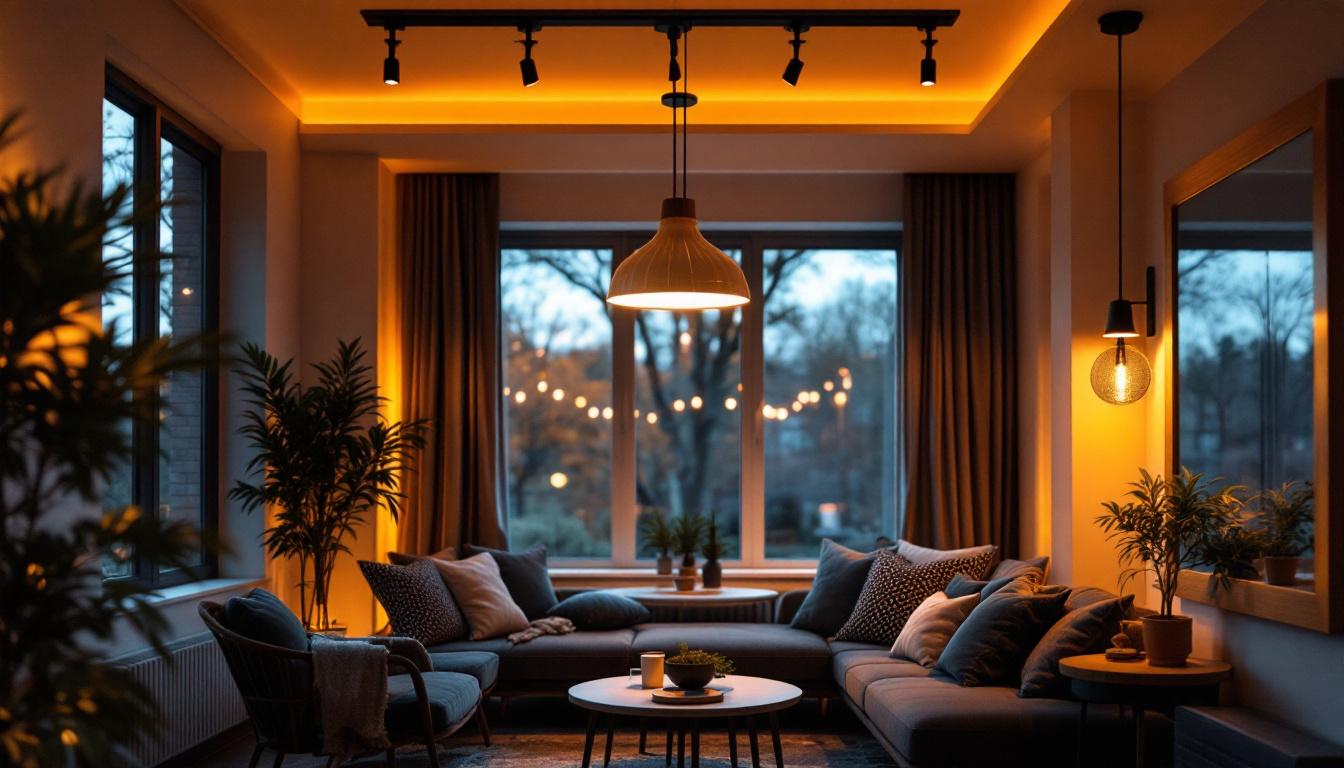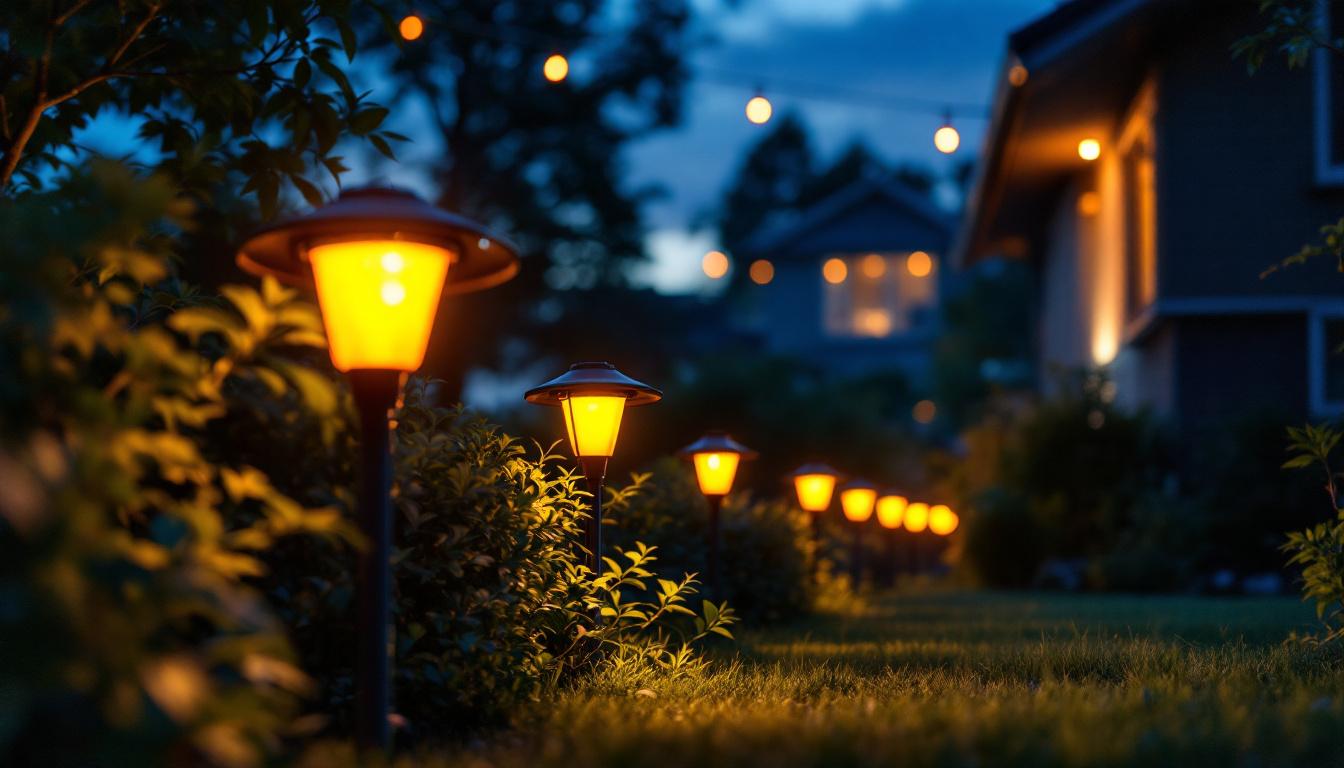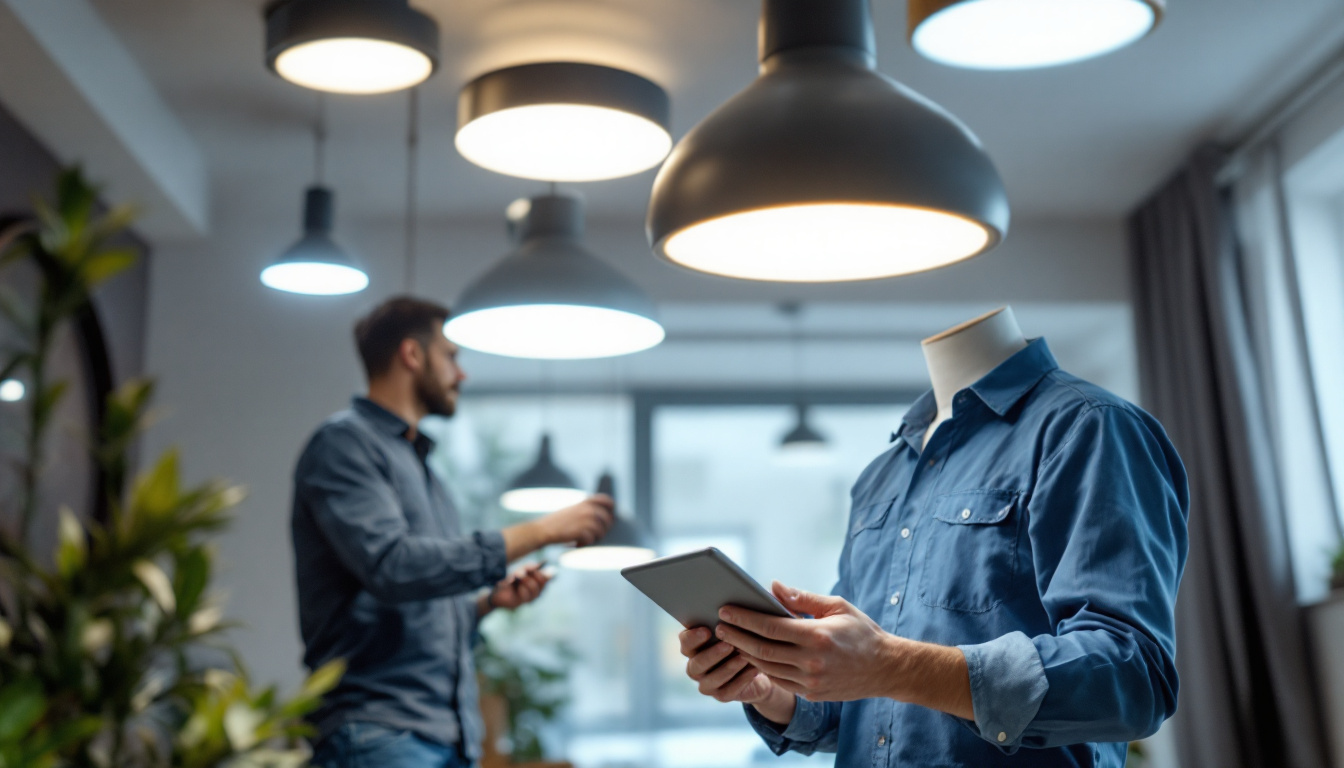
As the demand for sustainable and energy-efficient solutions continues to rise, solar-powered indoor lighting has emerged as a viable option for both residential and commercial applications. This article aims to provide lighting contractors with a concise understanding of solar-powered indoor lighting, its components, advantages, and considerations for implementation.
Solar powered indoor lighting utilizes solar energy to illuminate indoor spaces, offering an eco-friendly alternative to traditional lighting systems. This technology harnesses sunlight through solar panels, converting it into usable electricity to power LED lights. The system typically includes solar panels, batteries, an inverter, and LED fixtures. The growing popularity of this technology is not just due to its sustainability, but also its potential to significantly reduce electricity costs over time, making it an appealing option for both residential and commercial applications.
To effectively implement solar-powered indoor lighting, it is essential to understand its core components:
The process begins when solar panels capture sunlight and convert it into electricity. This electricity is either used immediately to power LED lights or stored in batteries for later use. When the sun sets or during periods of low sunlight, the stored energy is released to maintain illumination. The inverter plays a crucial role in ensuring that the electricity is compatible with standard lighting systems. The entire system can be monitored through smart technology, allowing users to track energy production and consumption, optimize performance, and even control lighting remotely via smartphone applications.
Moreover, the integration of solar powered indoor lighting systems can contribute to energy independence, particularly in regions where electricity supply is unreliable or costly. By utilizing renewable energy sources, users can reduce their carbon footprint and contribute to a more sustainable future. Additionally, the installation of these systems can increase property value, as more buyers are looking for energy-efficient homes equipped with modern technology. As the technology continues to evolve, we can expect even more innovative solutions and applications for solar powered indoor lighting, further enhancing its appeal and practicality.
There are numerous benefits associated with solar-powered indoor lighting that make it an attractive option for lighting contractors and their clients.
Solar-powered lighting systems significantly reduce reliance on grid electricity, leading to lower energy bills. By utilizing renewable energy, these systems contribute to a more sustainable future and can help clients achieve their energy-saving goals. In addition, many solar lighting systems come equipped with energy-efficient LED bulbs, which further enhance energy savings by consuming less power while providing brighter illumination. This combination of solar technology and LED efficiency not only maximizes energy conservation but also extends the lifespan of the lighting fixtures, making them a smart investment for both residential and commercial spaces.
Using solar energy reduces carbon emissions and minimizes the environmental footprint associated with traditional lighting solutions. This aligns with growing consumer demand for eco-friendly products and can enhance a contractor’s reputation as a provider of sustainable solutions. Furthermore, the adoption of solar-powered lighting contributes to the reduction of fossil fuel dependence, promoting a cleaner energy landscape. As more individuals and businesses recognize the importance of sustainability, integrating solar lighting into projects can serve as a compelling selling point, showcasing a commitment to environmental stewardship and responsible resource management.
Once installed, solar-powered indoor lighting systems typically require minimal maintenance. With no wiring or electrical connections to worry about, the risk of electrical failures is significantly reduced. Regular cleaning of solar panels and occasional battery checks are usually sufficient to keep the system running efficiently. Additionally, many modern solar lighting systems are designed to be durable and weather-resistant, allowing them to withstand various indoor conditions without compromising performance. This reliability not only provides peace of mind to clients but also allows contractors to focus on other aspects of their projects, knowing that the solar lighting will continue to operate effectively with little oversight.
Another significant advantage of solar-powered indoor lighting is its cost-effectiveness over time. Although the initial investment may be higher than traditional lighting options, the long-term savings on electricity bills can quickly offset these costs. Additionally, many governments and local authorities offer incentives, rebates, or tax credits for solar installations, further reducing the financial burden on clients. This makes solar lighting not only an environmentally friendly choice but also a financially savvy one, appealing to budget-conscious homeowners and businesses alike. As energy prices continue to rise, the appeal of solar-powered solutions is likely to grow, making them a wise choice for future-proofing lighting needs.
While solar-powered indoor lighting presents numerous advantages, there are several considerations that lighting contractors should keep in mind when implementing these systems.
Before installation, a thorough site assessment is crucial to determine the feasibility of solar-powered lighting. Factors such as available sunlight, roof orientation, and potential obstructions must be evaluated to ensure optimal performance. Contractors should also consider the specific lighting needs of the space to design an effective system.
Proper sizing of the solar lighting system is essential to meet the energy demands of the indoor space. Contractors must calculate the total wattage required for the LED fixtures and ensure that the solar panels and batteries can adequately support this demand. Oversizing or undersizing can lead to inefficiencies and increased costs.
Familiarity with local regulations and building codes is vital when installing solar-powered indoor lighting systems. Contractors should ensure that their designs comply with safety standards and any relevant incentives or rebates that may be available for renewable energy projects.
Solar-powered indoor lighting can be applied in various settings, making it a versatile choice for contractors.
In residential applications, solar-powered lighting can effectively illuminate areas such as living rooms, kitchens, and hallways. Homeowners seeking to reduce their energy costs and carbon footprint will find this option appealing. Additionally, it can be integrated into smart home systems for enhanced control and convenience.
For commercial and industrial spaces, solar-powered lighting can be utilized in warehouses, offices, and retail environments. By reducing operational costs and improving sustainability, businesses can enhance their corporate social responsibility profile while benefiting from lower energy expenses.
Public facilities such as schools, parks, and community centers can also benefit from solar-powered indoor lighting. These installations not only provide reliable illumination but also serve as educational tools, showcasing the benefits of renewable energy to the community.
Despite the many advantages, there are challenges and limitations that contractors should be aware of when considering solar-powered indoor lighting.
The initial investment for solar-powered lighting systems can be higher than traditional lighting solutions. However, this cost can be offset by long-term energy savings and potential government incentives. Contractors should be prepared to discuss the return on investment with clients to help justify the upfront costs.
Solar-powered systems rely on sunlight to generate electricity. In regions with limited sunlight or during extended periods of cloudy weather, the effectiveness of these systems may be compromised. Contractors must evaluate the local climate and educate clients about potential limitations.
The lifespan of solar batteries can vary, typically lasting between 5 to 15 years depending on usage and maintenance. Contractors should inform clients about the need for eventual battery replacement and the associated costs.
The solar lighting industry is constantly evolving, with new technologies and innovations emerging to enhance system performance and efficiency.
As smart home technology continues to advance, the integration of solar-powered lighting with smart systems is becoming increasingly popular. This allows for greater control over lighting schedules, energy consumption tracking, and remote management through mobile applications.
Advancements in battery technology are leading to more efficient and longer-lasting energy storage solutions. This will enhance the reliability of solar-powered indoor lighting systems, allowing for better performance even in less-than-ideal sunlight conditions.
Manufacturers are developing a wider range of aesthetically pleasing solar fixtures that can seamlessly blend into various indoor environments. This trend will make solar-powered lighting more appealing to homeowners and businesses alike, enhancing the overall design of the space.
Solar-powered indoor lighting represents a significant opportunity for lighting contractors to offer sustainable and energy-efficient solutions to their clients. By understanding the components, advantages, and considerations of these systems, contractors can effectively design and implement solar lighting solutions that meet the needs of diverse applications.
As the industry continues to evolve, staying informed about the latest trends and technologies will be essential for contractors looking to remain competitive in the market. Embracing solar-powered indoor lighting not only benefits clients but also contributes to a greener future for all.
Ready to elevate your lighting projects with the sustainable efficiency of solar-powered indoor lighting? At LumenWholesale, we provide lighting contractors like you with the highest quality, spec-grade lighting products at prices that can’t be beaten. Our commitment to cutting out the middleman means you enjoy superior lighting without the inflated markups, ensuring every project shines with reliability and high performance. With our extensive selection, free shipping on bulk orders, and a seamless purchasing experience, you’re guaranteed to find the perfect lighting solutions for your needs. Don’t compromise on quality or value—choose LumenWholesale for Wholesale Lighting at the Best Value and light up your indoor spaces with confidence.

Discover why solar lights in orange hues are becoming a crucial choice for lighting contractors.

Discover how lighting contractors can enhance their projects and boost client satisfaction by choosing the right lamp bulbs.

Discover how 3 Head Cobra can maximize success for lighting contractors with proven strategies, boosting efficiency and profitability—unlock your business potential today!.

Discover why staying updated on ceiling room lights is crucial for lighting contractors.